Leg cramps all day. Leg Cramps: Causes, Treatment, and Prevention
What causes leg cramps? How can you treat leg cramps? What are the best ways to prevent leg cramps? Get the answers to these questions in this comprehensive article.
Understanding Leg Cramps
Leg cramps, also known as “Charley horses,” are sudden, involuntary, and painful contractions of the leg muscles. These cramps can occur in the feet, calves, or thighs, and can last anywhere from a few seconds to several minutes. While the exact cause of leg cramps is often unclear, there are a number of factors that may contribute to their development.
Causes of Leg Cramps
Leg cramps can be caused by a variety of factors, including:
- Muscle Fatigue: Overuse or strenuous activity can lead to muscle fatigue, which may trigger a leg cramp.
- Nerve Dysfunction: Damage or dysfunction in the nerves that supply the leg muscles can contribute to the development of leg cramps.
- Underlying Health Conditions: Certain health conditions, such as diabetes, kidney failure, and peripheral artery disease, can increase the risk of leg cramps.
- Dehydration and Electrolyte Imbalances: While the connection is not firmly established, some experts believe that dehydration and electrolyte imbalances, such as low levels of potassium or magnesium, may play a role in the development of leg cramps.
- Medications: Certain medications, such as iron supplements, conjugated estrogens, and raloxifene, have been linked to an increased risk of leg cramps.
- Age: Older adults are more prone to leg cramps due to the natural loss of muscle mass that occurs with aging.
Treating Leg Cramps
When a leg cramp occurs, the following steps can help provide relief:
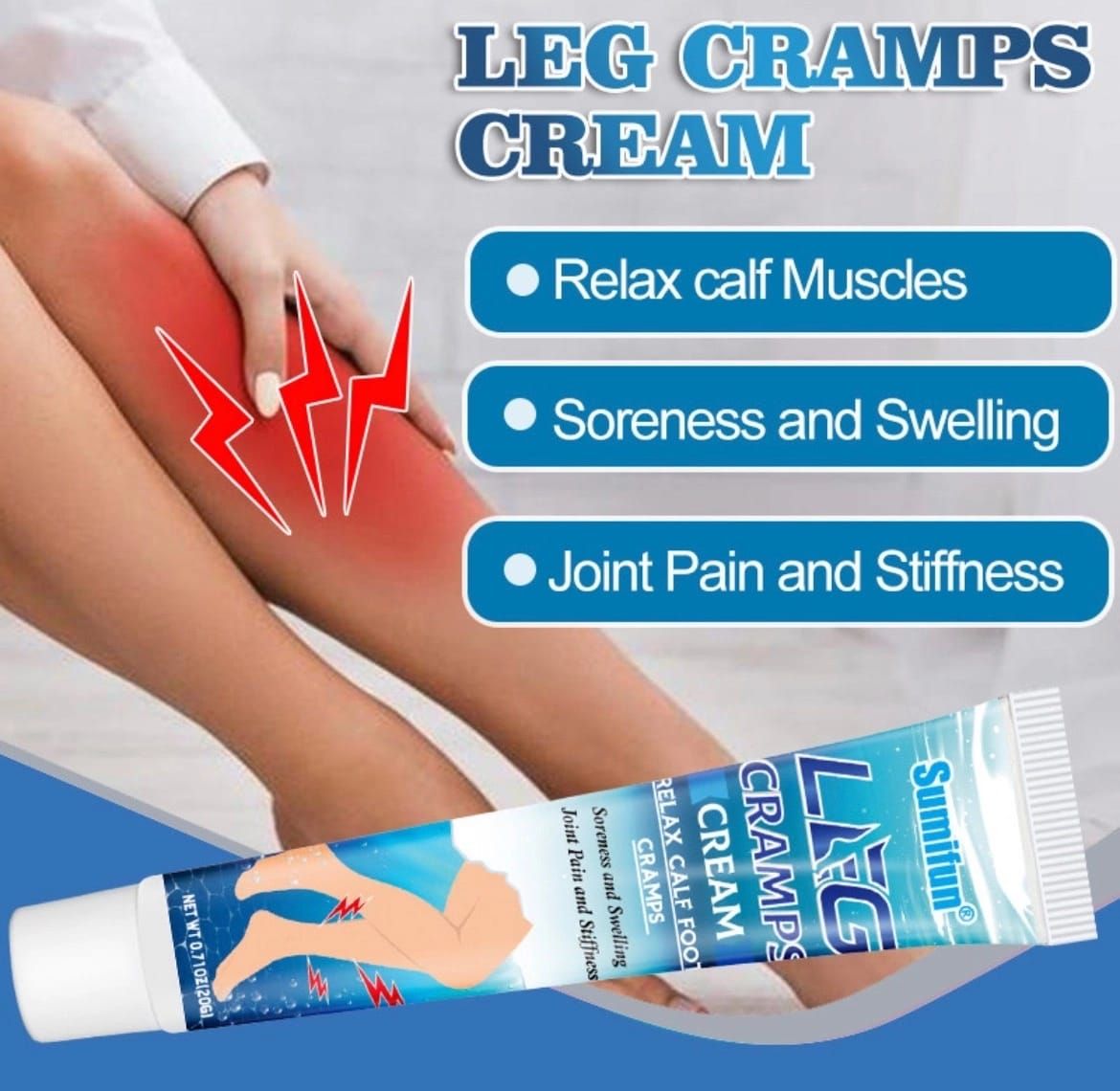
- Stop the Activity: If the cramp occurred during physical activity, stop the activity immediately.
- Stretch and Massage the Muscle: Gently stretch and massage the affected muscle to help it relax.
- Apply Heat or Cold: Applying heat or cold to the affected muscle can help reduce pain and tension.
- Take an Over-the-Counter Medication: If the muscle feels tender after the cramp, an over-the-counter pain medication may provide relief.
Preventing Leg Cramps
While there is no guaranteed way to prevent leg cramps, the following strategies may help reduce the frequency and severity of these painful contractions:
- Stretching and Exercising: Regularly stretching and exercising the leg muscles can help keep them strong and flexible, reducing the risk of cramps.
- Staying Hydrated: Drinking plenty of water and maintaining electrolyte balance may help prevent leg cramps, especially in athletes and those who exercise in hot weather.
- Managing Underlying Conditions: Properly managing any underlying health conditions, such as diabetes or peripheral artery disease, can help reduce the risk of leg cramps.
- Avoiding Certain Medications: If a medication is suspected of causing leg cramps, speak with your healthcare provider about alternative options.
When to Seek Medical Attention
While most leg cramps are harmless and resolve on their own, there are certain situations when it’s important to seek medical attention:

- Persistent or Recurrent Cramps: If leg cramps are frequent or persistent, it’s important to speak with a healthcare provider to identify any underlying causes.
- Severe or Debilitating Cramps: Cramps that are extremely painful or that significantly impair your ability to walk or move may require medical evaluation.
- Accompanying Symptoms: If leg cramps are accompanied by other concerning symptoms, such as swelling, redness, or numbness, it’s important to seek medical attention.
Conclusion
Leg cramps can be a common and often painful experience, but understanding the causes and implementing the right strategies for treatment and prevention can help alleviate the discomfort. By staying hydrated, stretching regularly, and addressing any underlying health conditions, you can take proactive steps to reduce the frequency and severity of leg cramps.
Leg cramps: Causes, treatment, and prevention
Why leg cramps, or Charley horses, occur is often not clear. But, they may result from nerve dysfunction, shortened leg muscles, and various health conditions, such as diabetes and kidney failure. Stretching the muscle may bring relief, but an underlying condition will need medical attention.
Leg cramps involve sudden, painful, and involuntary contractions of a leg muscle, causing pain and discomfort in the feet, calves, and thigh muscles
They often occur while a person is sleeping or resting. They can be gone in a few seconds, but the average duration is 9 minutes. They can leave tenderness in the muscle for up to 24 hours after.
In most cases, there is no identifiable reason why they happen, and they are harmless. Sometimes, however, they can indicate an underlying disorder, such as diabetes or peripheral artery disease.
In most cases, people do not know why leg cramps happen, although there are a number of theories.
Some research suggests that muscle fatigue and nerve dysfunction may play a role.
Sleeping with the foot stretched out and the calf muscles shortened may trigger night cramps.
Another theory is that cramps are more likely nowadays, as most people no longer squat, a position that stretches the calf muscles.
Exercise is a factor. Stressing or using a muscle for a long time may trigger a leg cramp during or after the exertion. Cramps often affect athletes, especially at the start of a season, if their body is out of condition. Nerve damage may play a role.
Some experts believe dehydration and electrolyte imbalances may contribute. Athletes who exercise strenuously in hot weather often experience cramps. However, scientific evidence has not confirmed this connection. Athletes who play in cool climates also get cramps, after all.
Sometimes leg cramps are caused by an underlying condition relating to the nervous system, circulation, metabolism, or hormones.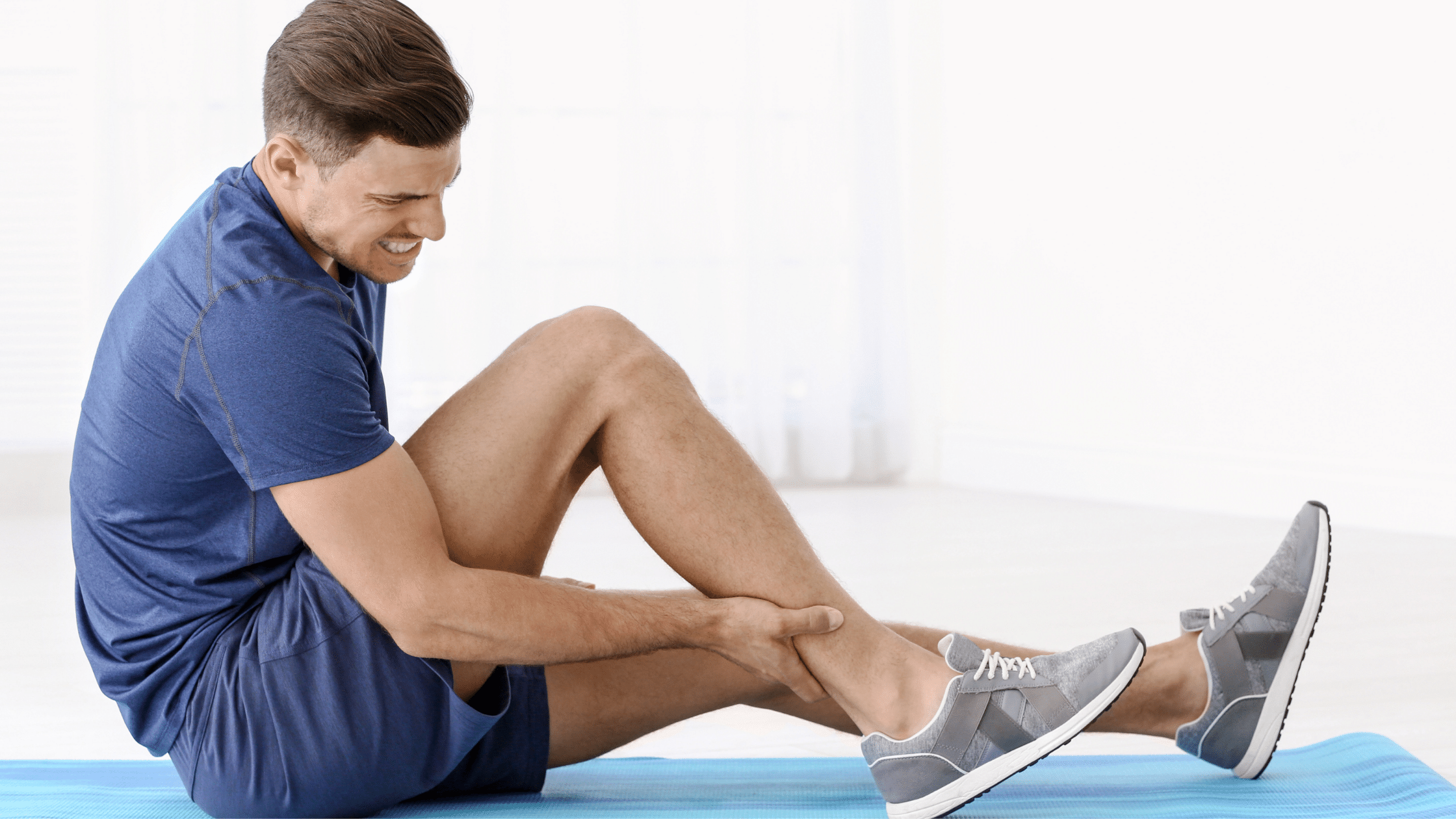 Some medications can also increase the risk.
Some medications can also increase the risk.
Conditions that may cause cramps include:
- alcohol misuse
- cirrhosis
- chronic kidney failure
- hemodialysis
- cancer treatment
- muscle fatigue
- vascular disease
- Parkinson’s disease
- peripheral artery disease (PAD)
- restless legs syndrome
- pregnancy, especially in the later stages
- motor neuron disease
- Lou Gehrig’s disease (amyotrophic lateral sclerosis, or ALS)
- spinal nerve irritation or compression
- hardening of the arteries
- spinal stenosis
- thyroid disease and hormonal problems
- chronic infections
- chronic obstructive pulmonary disease (COPD)
- chronic kidney disease and kidney failure
- diabetes, especially type 2 diabetes
- fibromyalagia
Medications that can trigger cramping include:
- iron sucrose (Venofer)
- conjugated estrogens
- raloxifene (Evista)
- naproxen (Aleve)
- teriparatide (Forteo)
Older people are more likely to experience leg cramps.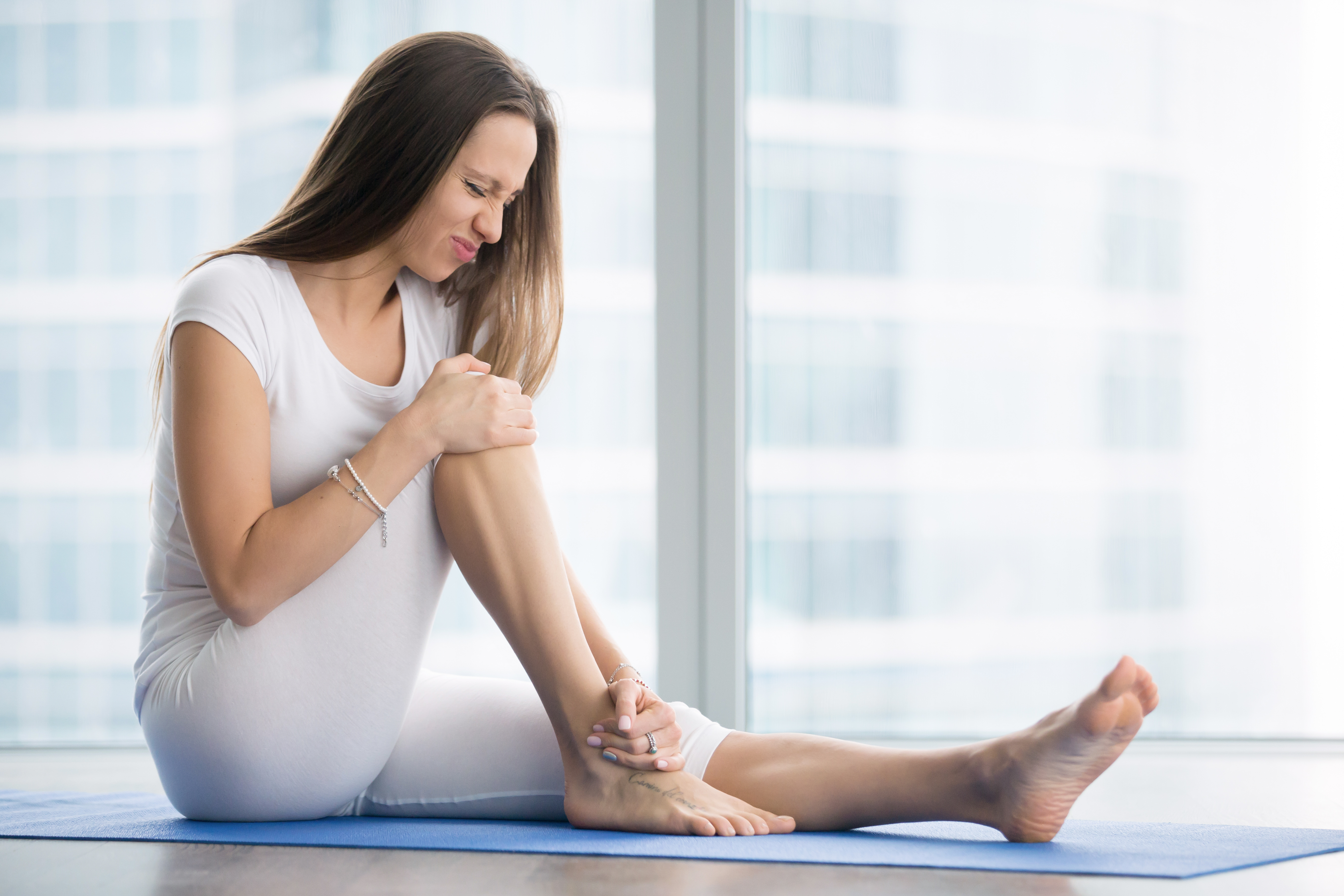 Muscle loss starts from the mid-40s and increases if a person is not active. This may raise the risk of cramps.
Muscle loss starts from the mid-40s and increases if a person is not active. This may raise the risk of cramps.
Research suggests that 50–60% of adults and 7% of children experience cramps, and the likelihood increases with age.
The American Academy of Orthopaedic Surgeons (AAOS) suggest the following to ease cramping:
- Stop the activity that caused the cramp.
- Stretch and massage the muscle.
- Hold the leg in the stretched position until the cramp stops.
- Apply heat to muscles that are tight or tense.
- Use cold packs on tender muscles.
Some people use supplements, such as magnesium, to reduce muscle cramps. However, a 2020 review that looked at older adults concluded that they were unlikely to benefit from this treatment. For other contexts, such as pregnancy, there is not enough evidence to show whether supplements help.
Stretching before bedtime may help, but evidence is limited.
No medication is likely to prevent leg cramps.
If a severe cramp leaves a muscle feeling tender, an over-the-counter (OTC) painkiller may help.
In the past, people used quinine. However, the Food and Drug Administration (FDA) urge people not to use this, as it may have dangerous interactions and side effects.
There is limited evidence that exercise and stretching, calcium channel blockers, carisoprodol, and vitamin B-12 may help. Multivitamins may be of some use during pregnancy.
There is no evidence that nonsteroidal anti-inflammatory drugs (NSAIDs), calcium, or potassium are of any benefit.
Here, learn more about treating leg muscle cramps.
If there is no underlying cause, leg cramps will probably get better without treatment.
Walking on tiptoes may help stretch the muscles and relieve a cramp.
Stretching exercises may help. If the cramp is in the calf muscle try the following stretches:
Hamstring muscle stretch
Image credit: Zinkevych/Getty Images
- Sit on the floor with legs straight out in front.

- Pull the toes up toward the knee, to stretch the calf muscle.
- Hold for 30 seconds.
Calf muscle stretch
- Stand about one meter from a wall with both feet flat on the ground.
- Lean forward against the wall with the arms outstretched and the hands flat on the wall. Keep the heels on the ground.
- Hold for 10 seconds, then gently return to an upright position.
- Repeat 5-10 times.
Quadriceps muscle stretch
- Stand up straight, holding a wall or chair for support if necessary.
- Pull one foot up toward the buttocks, grasp and ankle, and hold the foot as close to the body as far as possible.
- Hold for 30 seconds, then repeat with the other foot.
Doing these exercises may help relieve or prevent cramps. They can also serve as a warm up before exercise.
The following measures may also help prevent leg cramps.
- Support the toes when lying down or asleep by propping up the feet with a pillow.

- Keep bedding loose to help prevent the feet and toes from pointing downward during sleep.
- Wear suitable footwear during the day, especially if a person has flat feet or other foot problems.
Keeping fit by getting enough exercise can help. If a person does exercise, they should make sure their program is suitable and that their progress is gradual. Avoid overexertion and training for prolonged periods, and always remember to warm up before starting.
Leg cramps are not usually a cause for concern, but sometimes they can indicate an underlying problem. If cramps are severe or happen frequently, it may be a good idea to seek medical advice.
The doctor may carry out tests to try to identify an underlying cause. If the person is taking medications that can trigger cramps, the doctor may adjust the dose or change the drug.
Leg cramps are a common problem that usually happen for no identifiable reason. Stretching and massaging the muscle can often bring relief.
In some cases, however, there may be an underlying cause that needs medical attention. If cramps are severe or frequent, consider consulting a doctor.
Leg cramps – NHS
Leg cramps are common, usually harmless and only last a short time. They can happen at any time, but most people have them at night or when resting.
Check if it’s leg cramps
Leg cramps happen when a muscle in the leg tightens and causes a sudden pain that can make it hard to move.
The cramps can last from a few seconds to 10 minutes.
They can affect the:
- calf muscle, below the knee at the back of the leg
- muscles in the feet or the thighs (less often)
After the cramp has stopped, the muscle might feel sore for up to 24 hours.
Things you can do about leg cramps yourself
During a cramp
Stretching and massaging the muscle may ease the pain during a cramp, although most cramps go away without you doing anything.
Paracetamol or ibuprofen can help to ease muscle soreness after a cramp, but they will not help when it’s happening as they take too long to work.
Preventing cramps
Regular calf-stretching exercises may help to reduce cramps but may not completely stop them from happening.
How to stretch calf muscles
- Stand facing a wall and stretch out your arms until your hands can just touch it.
- Make sure you are able to stand up straight and that your feet are flat on the floor.

- Lean forward, pressing your hands against the wall until you feel your calf muscles stretch. Hold for 2 or 3 seconds.
- Stand up straight again.
- Repeat a few times for 5 minutes, 3 times a day (the last time just before bed).
If the number of cramps reduces, you might only need to do the exercise once or twice a day.
Non-urgent advice: See a GP if:
- leg cramps are disturbing your sleep
- you also have numbness or swelling in your legs
- cramps last longer than 10 minutes
Treatment for leg cramps from a GP
A GP will examine you to try to find out the reason for your leg cramps.
They will suggest a treatment depending on the cause.
This might be:
- stretching exercises
- quinine tablets if exercise has not helped
Quinine is not suitable for everyone. The GP will discuss potential risks and side effects with you.
Causes of leg cramps
Leg cramps can sometimes be caused by:
- ageing
- putting too much strain on muscles during exercise, which can be worse in hot or humid weather
- pregnancy (usually in the later stage)
- certain medicines, for example medicine for lowering cholesterol (statins) or high blood pressure (diuretics)
- not drinking enough fluids (dehydration)
- liver disease because of too much alcohol
The reason for some cramps is unknown.
Page last reviewed: 16 December 2020
Next review due: 16 December 2023
Leg cramps – should I be worried?
Short-term painful localized (limited to one muscle or group of muscles) cramps are called cramps . They can occur in any muscle group but are most common in the calf muscles. And it looks like this: we lie on our back and after a slight movement of the toes, “ convulsive pains in the calf muscles ” appear, tightening and squeezing, extremely unpleasant. Such pain can also occur when we take off our shoes. By its nature, this is a long tonic contraction of the muscle, lasting from a few seconds to minutes.
Most often, cramps are associated with diseases of the lumbar spine (for example, osteochondrosis), in which, sooner or later, the nutrition of the nerve endings and muscles in the legs is disturbed, so they do not receive all the necessary nutrients and begin to work “wrongly”. Such cramps occur after physical exertion or at night in the supine position.
Such cramps occur after physical exertion or at night in the supine position.
Separately, stenosolia are isolated – these are compressive pains in the soleus muscle (it is deeper under the calf), also very unpleasant pains, but a little weaker than cramps. This muscle has a special structure and is very sensitive to microcirculation disturbances in it. Stenosolia often occurs when we lie on our side or stand for a long time, walk around, sit down.
Cramps in the calf muscles (crampy) causes
Crampi may occur as a symptom of circulatory disorders in stenosing diseases of the vessels of the legs (may be one of the symptoms of intermittent claudication). Patients with diabetes mellitus and hypothyroidism fall into the risk group for the development of diseases of the vessels of the legs, since these diseases will always develop a violation of cholesterol metabolism and atherosclerotic plaques will form on the vessels of the legs as well. This also includes “malicious smokers”.
Cramps can occur after active physical exertion on the legs, when squatting, and in the muscles of the hands, repetitive spasms can occur during prolonged use of the mouse.
There are also spontaneous cramps in the muscles of the arms and legs. They may be due to a hereditary feature and do not require special treatment.
But the cramps, which occur spontaneously and often in adolescence, should be closely looked at, since they may be the first sign of a hereditary enzyme defect in McArld’s disease (Type V glycogenosis, myophosphorylase deficiency).
And in adults, spontaneous cramps can be the first symptom of a severe neurological disease – amyotrophic lateral sclerosis .
Leg cramps and Magnesium
Although cramps may be a simple manifestation of metabolic disorders in the muscle, for example, in chronic magnesium deficiency.
This is probably a very common cause of . Magnesium is a unique mineral, it takes part in hundreds of biochemical processes in the body (according to modern concepts, about 300 biochemical processes in the human body occur with the participation of magnesium). This element is needed everywhere, but it comes with food in insufficient quantities, since we eat foods rich in magnesium in small quantities (bran, nuts, pumpkin seeds, sesame seeds). But magnesium is consumed intensively under stressful conditions (it goes to the work of the nervous system), during heavy physical exertion and in the heat (excreted with sweat), when drinking a large amount of liquid (excreted in the urine) and with frequent intake of alcoholic beverages. And if a muscle lacks magnesium, it is more prone to tension and spasms. For the same reason (magnesium deficiency), the eyelid may “twitch” – the circular muscle of the eye is tender and very sensitive to a lack of magnesium.
This element is needed everywhere, but it comes with food in insufficient quantities, since we eat foods rich in magnesium in small quantities (bran, nuts, pumpkin seeds, sesame seeds). But magnesium is consumed intensively under stressful conditions (it goes to the work of the nervous system), during heavy physical exertion and in the heat (excreted with sweat), when drinking a large amount of liquid (excreted in the urine) and with frequent intake of alcoholic beverages. And if a muscle lacks magnesium, it is more prone to tension and spasms. For the same reason (magnesium deficiency), the eyelid may “twitch” – the circular muscle of the eye is tender and very sensitive to a lack of magnesium.
I was recently asked if there is an alternative to magnesium replenishment other than using Magne B6. There are other preparations containing magnesium: magnerot, magnicum. It is believed that magnesium is well absorbed from the intestine in the presence of pyridoxine (vitamin B6) or in the form of a salt of orotic acid, but in food magnesium often comes with calcium or phosphorus, and they prevent magnesium from being absorbed in the intestine.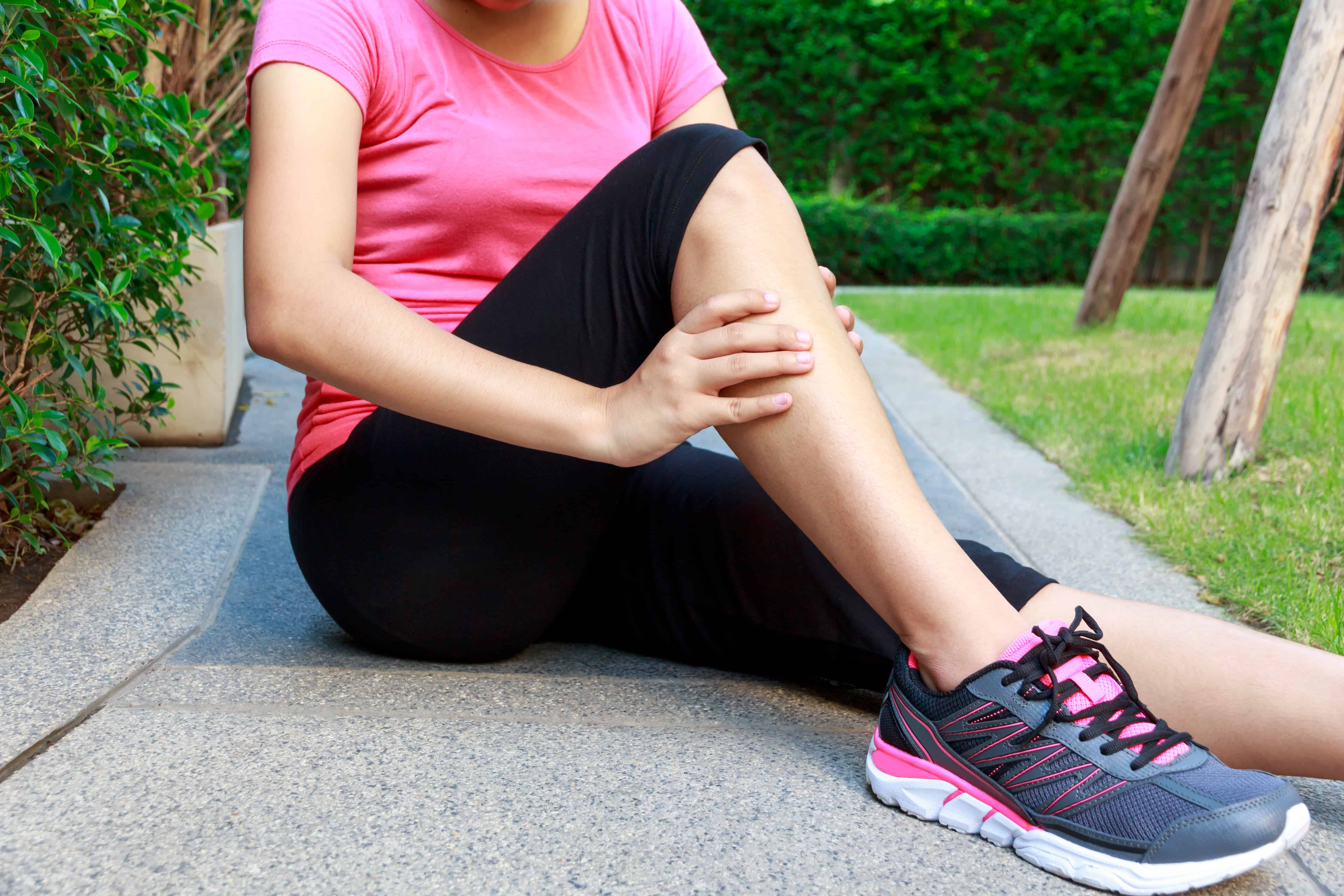 With the culinary processing of products, its amount is significantly reduced. Yes, and in food it is contained less and less due to the rapid development of “new technologies”. You can, of course, provide yourself with magnesium with the help of proper nutrition, but this must be really wanted.
With the culinary processing of products, its amount is significantly reduced. Yes, and in food it is contained less and less due to the rapid development of “new technologies”. You can, of course, provide yourself with magnesium with the help of proper nutrition, but this must be really wanted.
Leg cramps and Calcium
Calcium is also responsible for muscle contractility. And calcium deficiency (hypocalcemia) can be a metabolic cause of leg cramps.
Calcium in the daytime is spent on muscle work, and at night it goes to build bones.
As a rule, it is difficult to diagnose hypocalcemia in the initial stages. Small muscle spasms can occur both in the muscles in the legs and in the muscles of the back, and sometimes even in the muscles of the face. There may be a parallel sensation of “tingling” in the tip of the tongue, lips and fingers. Only in the already advanced stages does “carpopedal spasm” develop (prolonged and very painful strong flexion of the muscles of the flexors of the foot and fingers) and tetany attacks (with the presence of laryngospasm and generalized convulsive seizures that threaten life).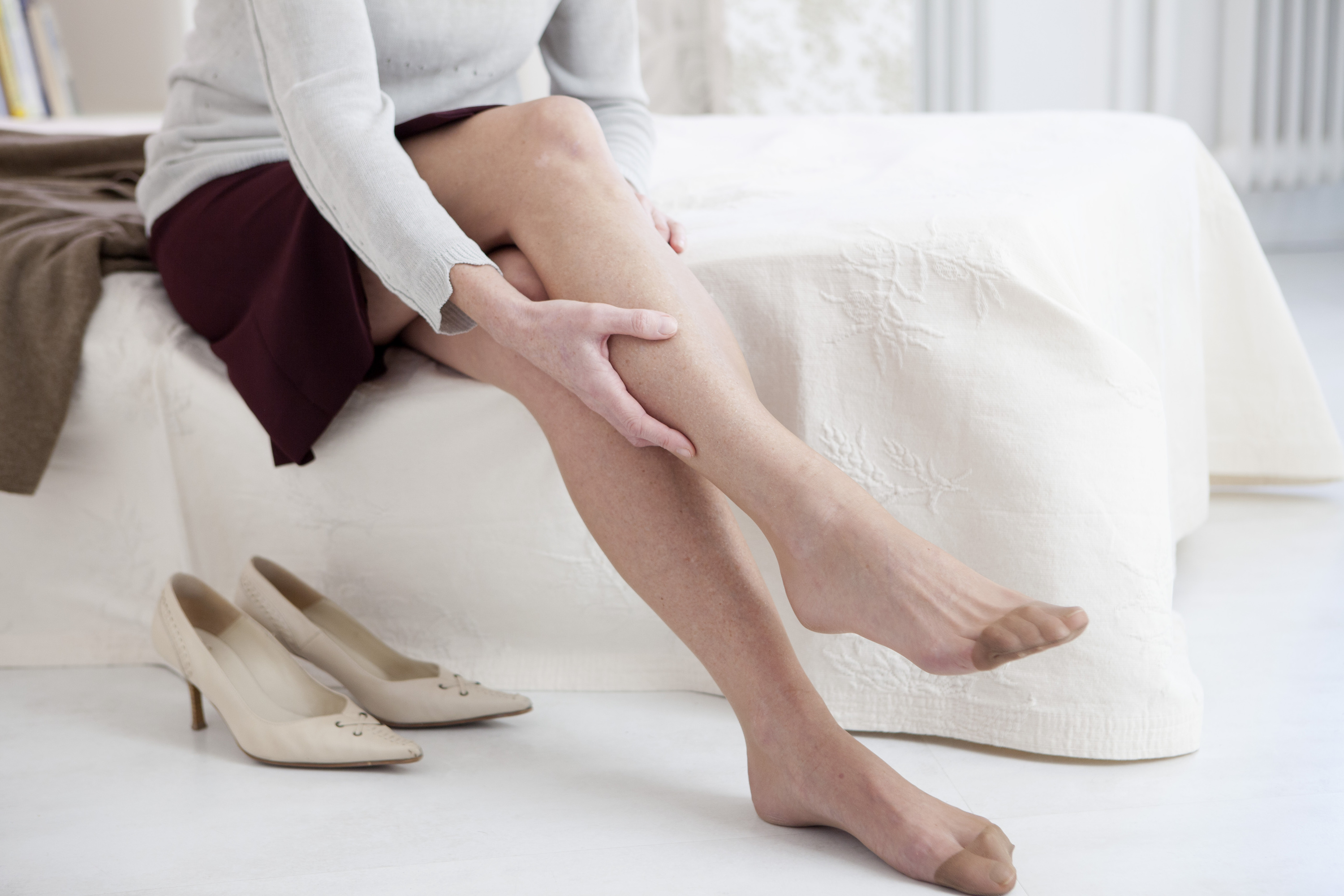
But many different diseases can lead to calcium deficiency. The most common include hypoparathyroidism (deficiency of the parathyroid hormone of the parathyroid gland leads to a violation of the level of calcium in the blood), vitamin D deficiency (impaired absorption of calcium in the intestine), with chronic kidney disease (due to a decrease in calcium reabsorption in the kidneys, it is intensively excreted, except in addition, the synthesis of vitamin D in the kidneys decreases), with acute pancreatitis (with fatty necrosis, calcium binds to fatty acids, the secretion of glucagon and calcitonin also increases), and taking certain medications (antacids, rifampicin, phenobarbital, phenytoin, agents to lower calcium levels in blood). But there are actually a lot of reasons for lowering the level of calcium, and for an accurate determination it is necessary to conduct appropriate studies.
If you are worried about cramps in your legs , then it’s up to you whether to worry or not. But, in my opinion, any change in our body does not happen by chance and requires attention. However, do not self-medicate and self-diagnose. Consult your doctor and stay healthy!
But, in my opinion, any change in our body does not happen by chance and requires attention. However, do not self-medicate and self-diagnose. Consult your doctor and stay healthy!
Article prepared by:
Leg cramps: causes, treatment symptoms
Contents:
➦ What are cramps?
➦ Types of spasms
➦ Causes of leg cramps
➦ Symptoms of muscle cramps
➦ Who is at risk?
➦ Treating cramps
➦ Are there folk remedies for spasms?
➦ How to prevent leg cramps
➦ When should you see a doctor?
Statistics state that involuntary painful contraction of muscles in the lower extremities is a common problem faced by every second person on the planet. Unpleasant spasm, popularly called “broke leg”, can occur during a morning run, swim in the sea or wake up in the middle of the night. The calf muscle seems to live its own life, forcing writhing in pain. What is the cause of seizures, how dangerous is this condition and how to get rid of it? This is the new material of our Phytoblog.
What are seizures?
Muscle cramp is a musculoskeletal condition characterized by involuntary, painful and intense contraction of a muscle or group of muscles that lasts from a few seconds to long minutes. They can occur in a healthy person at rest, but most often during or after exercise or at night while sleeping.
Spasmodic pain in the muscles after a slight movement of the toes covers the ankle, back of the thigh, causes plantar flexion of the foot and toes. It happens during movement, sleep, and even when we take off our shoes.
Most often, cramps in the calf muscles, although unpleasant, do not pose a danger, but sometimes they can threaten a person’s life (for example, while swimming) or are evidence of some kind of disease.
Types of spasms
Muscle cramps in the legs are divided into two types:
► essential – benign
► transient
secondary – resulting from the underlying disease.
Depending on the location, there are:
✓ cramps – most often found in the calf muscles, under the knee, but can also occur in other places. They are distinguished by painful constricting, squeezing, extremely unpleasant spasms. Caviar reduces after physical exertion or in the supine position during sleep.
They are distinguished by painful constricting, squeezing, extremely unpleasant spasms. Caviar reduces after physical exertion or in the supine position during sleep.
✓ stenosolia – constrictive pain in the soleus muscle, which is located deeper under the calf, is also unpleasant, but slightly less than cramps.
By type of distribution:
➦ local – contraction of individual muscles (for example, reduces the foot)
➦ generalized – spasm of several muscle groups
Development mechanism:
➤ at rest, occurring at night (night cramps)
➤ during exercise (common in athletes)
➤ in pregnant women
The nature:
➠ tonic – prolonged tension during which a person “freezes” in an unnatural position
➠ clonic – intense rhythmic muscle twitching
➠ tonic-clonic and clonic-tonic – characteristic of a disease such as epilepsy.
Causes of leg cramps
The etiology of seizures depends on how dangerous they are to human health. These can be unpleasant, but harmless manifestations that do not require medical intervention, or a pathology that requires medical treatment.
These can be unpleasant, but harmless manifestations that do not require medical intervention, or a pathology that requires medical treatment.
Essential calf cramps can occur due to:
- dehydration
- muscle fatigue
- nutritional deficiencies
- physical activity, especially in certain sports (e.g. running, swimming)
- taking certain medications
- pregnancy.
The causes of secondary seizures are:
✦ venous insufficiency
✦ Metabolic myopathy
✦ Neuri -generational diseases, including Charcot disease and Parkinson’s disease
✦ Arteriopathy
✦ diabetes.
Let’s take a closer look at the most common causes of muscle cramps.
Dehydration
The “classic” cause is lack of fluid. The exact mechanism is not yet fully understood by scientists. It is believed that the lack of fluid leads to sensitization of the nerve endings, causing contractions around the nerve. Dehydration can be caused by fluid loss due to diarrhea and repeated vomiting due to infection or poisoning, prolonged sun exposure, and poor drinking habits. Exercise exacerbates the situation, as sweating increases dehydration. Frequent consumption of coffee, tea and other caffeinated drinks removes water from the body.
Dehydration can be caused by fluid loss due to diarrhea and repeated vomiting due to infection or poisoning, prolonged sun exposure, and poor drinking habits. Exercise exacerbates the situation, as sweating increases dehydration. Frequent consumption of coffee, tea and other caffeinated drinks removes water from the body.
Mineral deficiency
Deficiency of sodium, calcium, magnesium or potassium can cause seizures, as these are elements that take part in the relaxation of muscle tissue. Directly or indirectly, cramps also suffer from a lack of certain vitamins. These include B vitamins (thiamine (B1), pantothenic acid (B5) and pyridoxine (B6)).
The body may not get enough of the necessary substances if the principles of proper nutrition are violated, for example, due to diet, as well as due to a number of diseases. This problem also applies to athletes, because during training, along with sweat, the body leaves the electrolytes and minerals necessary for the normal functioning of the body.
A balanced diet and sports drinks (isotonic drinks) can reduce this risk. Fortify your diet with mineral-rich bananas, sweet potatoes, spinach, yogurt, and nuts before and after workouts.
Preparations with B vitamins and isotonics in Phytomarket
Excessive exercise
A cramp is enough if you have not been involved in sports for a long time and start exercising too hard without first warming up. The fact is that the nerves that go from the brain to the spinal cord, and then to the muscles, are overstimulated. Rest and stretching is especially important in such a situation. Being tired before you even start exercising increases the risk of muscle spasms.
Prolonged sitting or standing position
Muscles like to contract and relax, they are designed to move. It cramps your ankle if you spend the whole day on your feet or, on the contrary, sit for too long. The occurrence of krampi is associated with problems of the lumbar spine (for example, osteochondrosis) and, as a result, disturbances in the nutrition of nerve endings and muscles in the legs. A prolonged static position (such as squatting) disrupts blood circulation in the thigh and ankle area, the muscle cannot relax and eventually shrinks sharply.
A prolonged static position (such as squatting) disrupts blood circulation in the thigh and ankle area, the muscle cannot relax and eventually shrinks sharply.
Medicines
Many drugs can cause seizures. Diuretics such as furosemide cause a decrease in mineral salts in the body and dehydration, which can induce spasms. Other drugs that cause the same problem include statins, drugs to prevent osteoporosis in postmenopausal women, used to treat Parkinson’s disease, and some medications used to lower cholesterol.
Pregnancy
The cause of seizures during pregnancy may be a lack of micro- and macronutrients. Also in the later stages, the vessels of the expectant mother are subject to a heavy load. Due to the size of the fetus, they can be partially pinched, so their blood supply is disrupted, which contributes to muscle spasms.
Diseases
Some diseases are characterized by severe cramps in the toes and ankles. Diabetes mellitus and other endocrine disorders associated with impaired cholesterol metabolism lead to the deposition of atherosclerotic plaques on the vessels of the legs, which can cause spasms of the calf muscles. Iron deficiency anemia also has similar symptoms. Frequent attacks of leg cramps may also indicate the presence of thrombosis – blockage of the veins as a result of uneven blood flow.
Diabetes mellitus and other endocrine disorders associated with impaired cholesterol metabolism lead to the deposition of atherosclerotic plaques on the vessels of the legs, which can cause spasms of the calf muscles. Iron deficiency anemia also has similar symptoms. Frequent attacks of leg cramps may also indicate the presence of thrombosis – blockage of the veins as a result of uneven blood flow.
Hypothermia
After swimming in cold water or hypothermia, the body may seize a severe cramp, which is dangerous during swimming.
Stress
The causes of crumpy include frequent stressful situations. In some cases, behind these manifestations lie neurological diseases, due to which a person is in constant tension, for example, amyotrophic lateral sclerosis.
Other common causes:
Wearing uncomfortable shoes. Shoes with high heels or very thin soles are one of the causes of overexertion of the calf muscles, which lead to its spasm.
Genetic predisposition. In this case, seizures may be due to a hereditary feature and do not require special treatment. However, cramps that occur spontaneously in adolescence may be the first sign of a hereditary enzyme defect in McArld’s disease (type V glycogenosis, myophosphorylase deficiency).
The factors contributing to muscle spasms are not always obvious. The exact cause of the pathology in most cases is unknown. The therapist will help you sort out the problem. To do this, laboratory tests are prescribed, you may need to consult an endocrinologist, phlebologist and other narrow specialists.
Leg cramps, magnesium and potassium
One of the common causes of leg cramps is a lack of magnesium and potassium in the body. These elements are friendly to each other. 60% of magnesium is found in human bones, the rest is in the cells of the heart and brain, as well as in soft muscle tissues. Potassium is poorly absorbed from food with magnesium deficiency.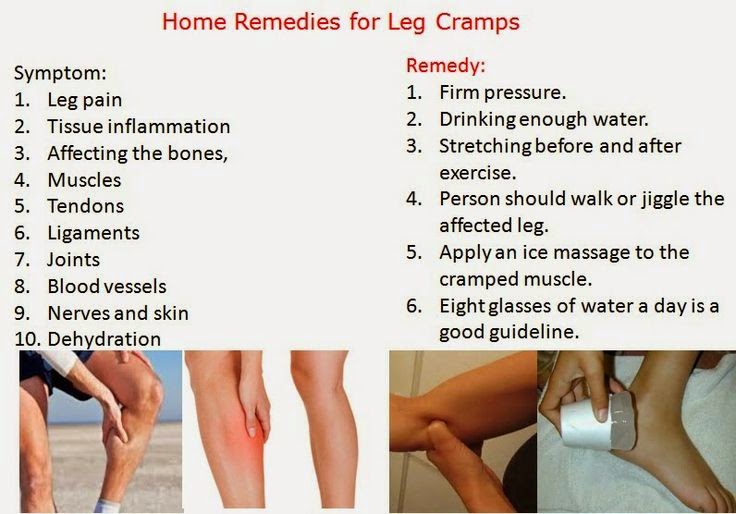
Magnesium is involved in hundreds of biochemical processes and is consumed very quickly in stressful situations, heavy physical exertion, in heat (comes out with sweat), when drinking large amounts of liquid, due to alcohol abuse. In addition, in food, magnesium often comes with calcium or phosphorus, which interfere with its absorption in the intestines. Culinary processing of products also significantly reduces its amount in food.
Chronic magnesium deficiency increases the tendency to muscle tension and spasms. A signal of magnesium deficiency is the twitching of the eyelid, since the circular muscle of the eye is very sensitive to its lack.
Low levels of potassium in the blood sometimes cause muscle cramps, although muscle weakness is more common in hypokalemia. And an excess of potassium with a lack of magnesium negatively affects the work of the heart: rhythm disturbances occur, an increased vascular tone develops.
Eating foods rich in magnesium and potassium (vegetables, herbs, fruits, nuts and seeds) will help avoid magnesium and potassium deficiency and prevent seizures.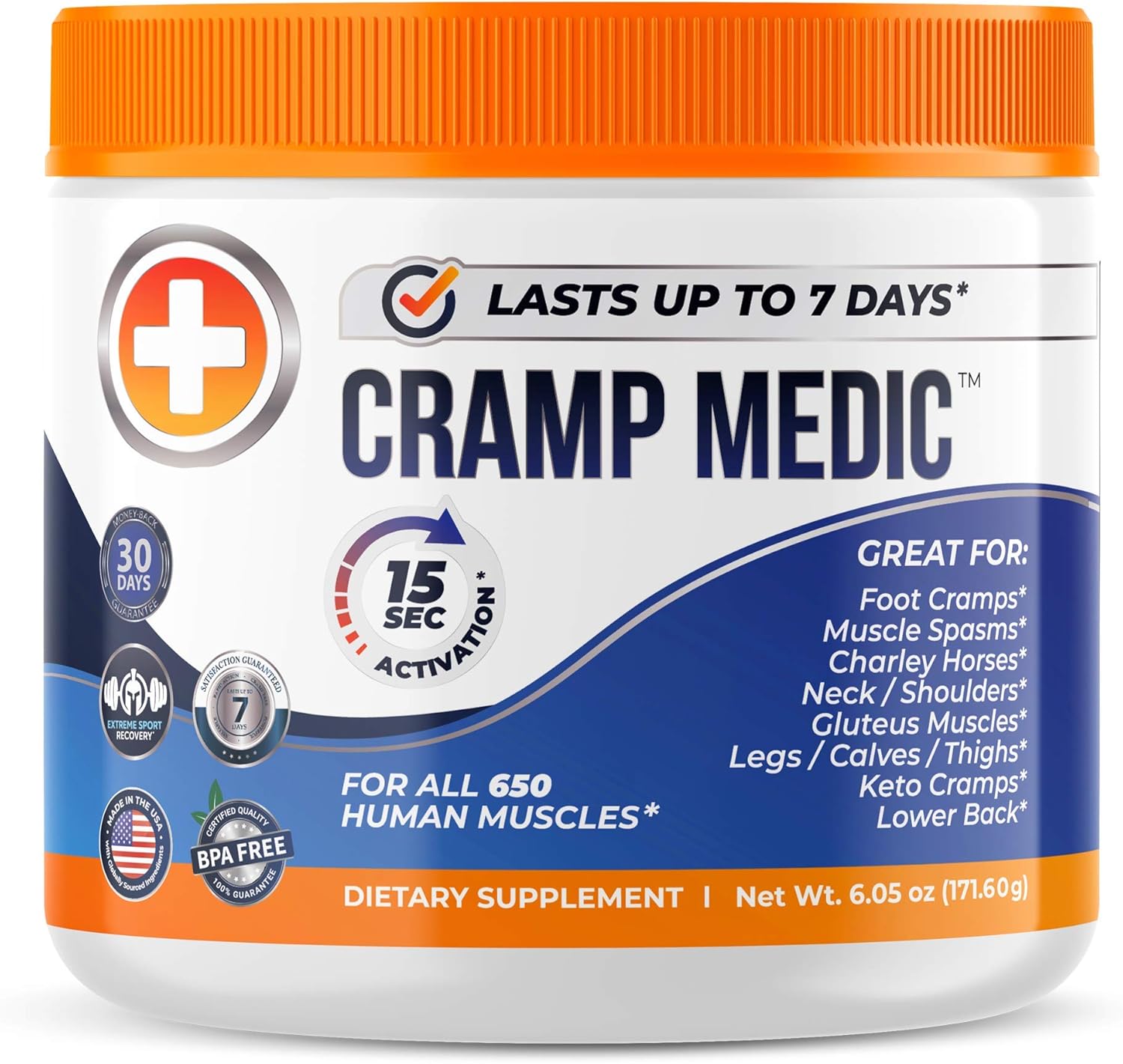
Leg cramps and calcium
Calcium is also responsible for muscle contractility. Its deficiency or, conversely, an overabundance can cause leg cramps.
Being an antagonist of magnesium, calcium replaces it in case of deficiency, causing irregular muscle contractions, most often in the calves and feet.
However, its deficiency, called hypocalcemia, also causes muscle spasms, since during the daytime calcium is spent on muscle work, and at night it goes to build bones.
Calcium deficiency can be caused by many reasons, including a number of diseases. Hypoparathyroidism, chronic kidney disease, acute pancreatitis and taking certain medications (antacids, rifampicin, phenobarbital, phenytoin), pregnancy lead to a violation of calcium levels. Low levels of this element in the blood can also cause numbness and tingling sensations around the mouth and other areas of the body.
Magnesium, calcium and potassium preparations in Phytomarket
Why do seizures often occur at night?
Scientists believe that leg cramps at night and in the morning may be the result of a combination of stress as a mental phenomenon, micronutrient deficiency as a dietary factor and poor blood circulation as a physiological cause.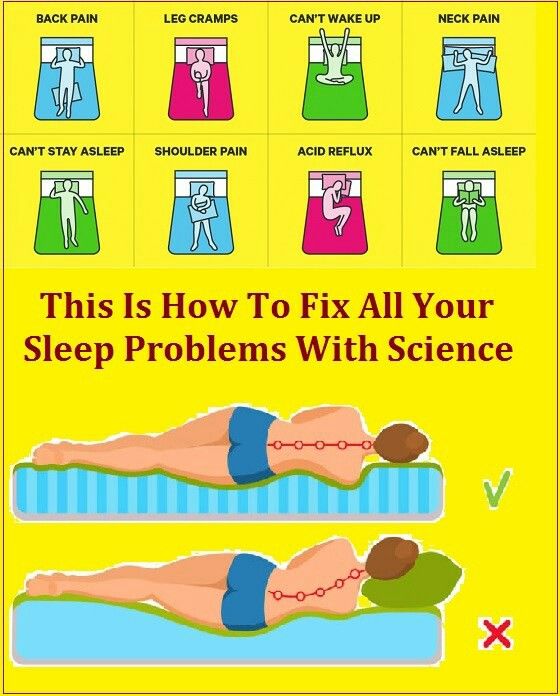
It is noted that during night cramps, the patient has increased brain activity, at this time he sees dreams. An uncomfortable posture during sleep provokes muscle spasm, as some muscles remain relaxed, while others take on the main load. Stenosolia most often occurs when we lie on our side.
Symptoms of muscle cramps
The symptoms of seizures are characterized by:
✘ severe and sharp pain in the lower leg
✘ persistent pain lasting from minutes to hours
✘ pain that usually occurs at rest and at night
9 0002 ✘ muscle contraction, palpable in of the affected lower leg
✘ soreness in the calves, which usually lasts for several hours.
The pain is aching, drawing or cutting. At the same time, the muscle seems to turn to stone, and the limb ceases to obey. The mechanism of spasm formation occurs in a cyclic pattern: blood does not enter the muscle, ischemia occurs in it. A person feels how the muscle has tightened and the leg hurts, strains it even more to weaken it, and as a result only provokes discomfort.
Muscle spasms are sometimes preceded by numbness or tingling, especially as a result of prolonged static posture. The affected muscle becomes dense on palpation. The part of the body that is in spasm does not function as before. Sometimes swelling or redness of the skin may appear at the site of the cramp.
Who is at risk?
Almost all categories of the population are susceptible to convulsions. But for some, spasmodic attacks occur from time to time, rarely, while for others they become a frequent companion of life.
At risk are:
- elderly people suffering from vascular diseases and muscular atrophy
- men involved in heavy physical labor
- athletes (football players, swimmers, runners)
- people who abuse alcohol and often experience a hangover 9 0144
- smokers
- pregnant women
- patients taking special drugs for the treatment of the underlying disease
Seizures are sometimes observed in addicts during cessation of sedatives.
A single case of seizures, as a rule, does not pose a serious danger. However, more serious diseases can also manifest themselves in this way. A doctor will help to determine the exact cause and help to cope with muscle spasms.
Treatment of convulsions
Symptoms of convulsions due to a specific disease are eliminated by treating the underlying pathology.
Depending on the diagnosis, muscle relaxants can be prescribed, and non-steroidal anti-inflammatory drugs are used to relieve pain. Wearing compression stockings will help relieve muscle spasms associated with venous insufficiency. Nutrient deficiencies can be corrected by changing the diet or taking dietary supplements.
You can provide first aid and relieve cramps in both legs by the following methods:
Gentle and gradual stretching of the muscle. To do this, pull the foot towards you and hold this position for a few seconds.
Pin prick. Injections of a spasmed muscle can eliminate the painful syndrome. This method is often used by athletes (swimmers and runners).
This method is often used by athletes (swimmers and runners).
Calf massage. May also be recommended to reduce muscle contraction. You can knead a muscle group during a spasm to relax the affected area.
Warm shower. Warm water helps relax muscles after cramps and relieve excessive tension.
Are there folk remedies for spasms?
Muscle spasms have long bothered people, so traditional medicine has collected many recipes that can eliminate or soothe cramps.
Infusion of Adonis (Adonis). Pour 100 ml of boiling water over one teaspoon of dry plant petals. After cooling, strain and consume inside 3 sips a day.
Linden tea. Pour one teaspoon of dried crushed linden flowers into 1 cup of boiling water. Insist 20 minutes. Consume in small sips after meals.
Infusion of ragwort . Pour 20 g of chopped rhizome with 250 ml of boiling water. After cooling, take 40 drops in the morning on an empty stomach.
Kefir with honey. In the morning on an empty stomach, eat 1 teaspoon of honey and drink 1 glass of kefir (course 1.5 weeks).
Tansy tincture . 100 g of dried grass is poured with a liter of vodka, insisted for one week in a dark place. The remedy is rubbed into the lower leg and feet before going to bed.
Compress based on herbal decoction. A tablespoon of dry herbs (red clover, yellow sweet clover, calendula flowers, rhubarb leaves and stalks) is poured with a liter of boiling water, then put in a water bath for 15 minutes. Next, the liquid is rearranged in a warm place for 30 minutes, then filtered. The resulting broth is moistened with a gauze napkin, applied to the painful area for 2-3 hours, wrapped in a dense material.
Horseradish compress. Spread a large leaf of horseradish with honey, sprinkle with salt and fix in place of cramps until the morning. Remove the compress in the morning and rinse the skin.
Lemon juice. Before going to bed, rub lemon juice on the cramp area, then wrap the area with a bandage.
Before going to bed, rub lemon juice on the cramp area, then wrap the area with a bandage.
Bay leaf. Grind the bay leaf and mix with vegetable oil, let it brew in a dark place for 2 weeks. Lubricate sore spots with the resulting ointment.
Mustard oil. Use to rub into cramped areas.
Traditional medicine recommends regular consumption of honey to prevent muscle cramps from fatigue: 1 tablespoon of honey daily during lunch.
How to prevent leg cramps
Clinical guidelines for the prevention of leg cramps:
✓ Drink enough water
✓ Eat a healthy and balanced diet
✓ Take vitamin and mineral supplements to replenish potassium, magnesium and calcium
✓ Maintain an active lifestyle with regular exercise
✓ Keep your muscles from exhaustion and fatigue
✓ Do not neglect the warm-up before the main workout
✓ Avoid prolonged static positions and uncomfortable postures
✓ Do not cross your legs while sitting
✓ Wear comfortable shoes
✓ Avoid swimming in cold waters and hypothermia in general
✓ Quit alcohol and smoking, avoid diuretics and carbonated drinks that remove calcium ions from the body
✓ Diabetics should especially pay attention to blood sugar levels, follow a diet consume a moderate amount of salt.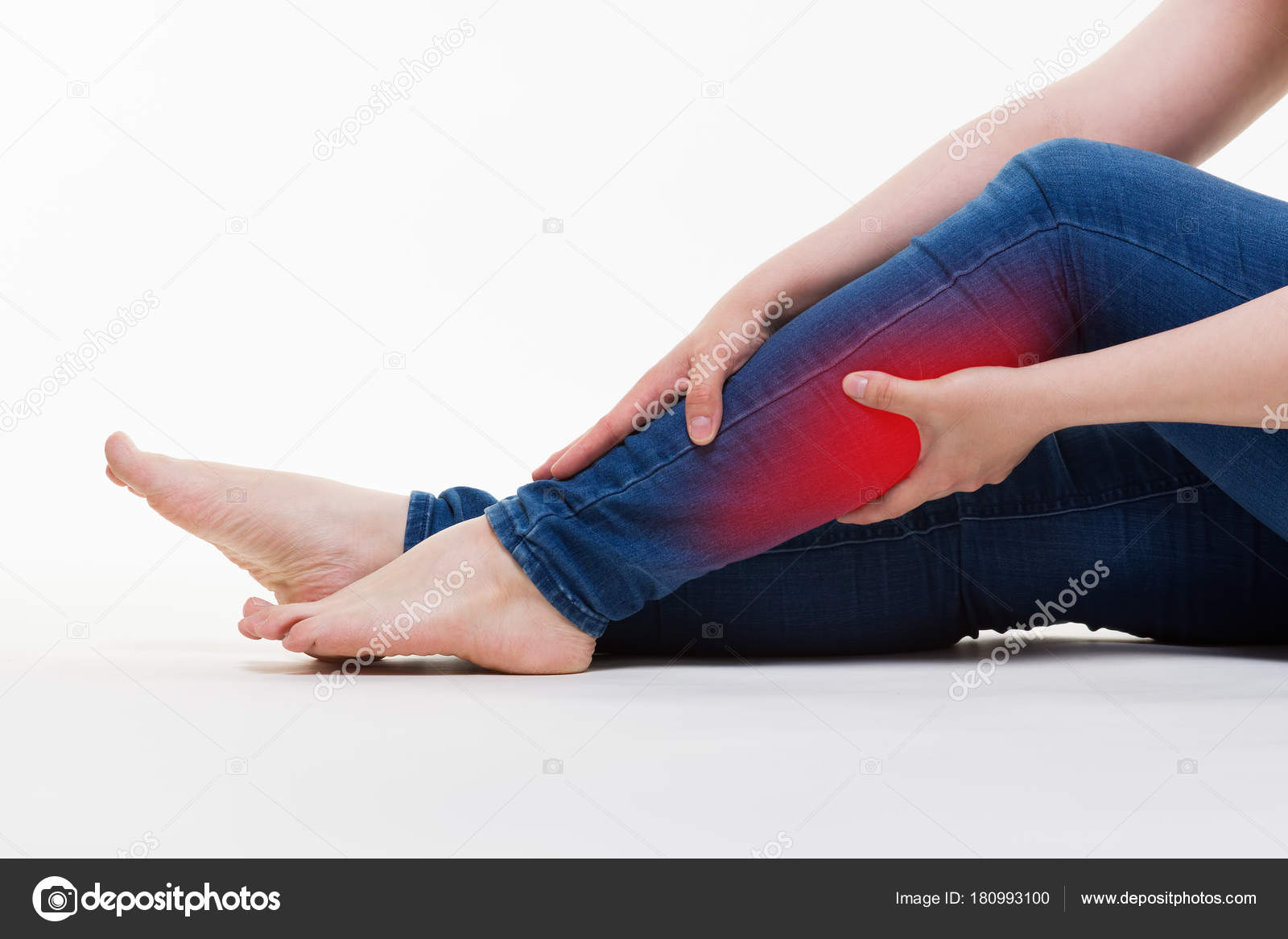
Morning exercise, fitness, yoga and other flexibility exercises make muscles more elastic. Relaxing massage or self-massage and a daily warm shower are also useful, which prevent disturbances in the blood supply to muscle tissue. While working at the computer, try to change the position of your legs, get up and walk around periodically. All this does not require much strength, but is an excellent prevention of the appearance of muscle tension, leading to convulsions.
When should you see a doctor?
Most calf cramps are mild and go away on their own. However, some of these attacks require medical advice.
Call your doctor if:
➤ convulsions are tortured, occur frequently
➤ duration of seizures increases
➤ a sharp spasm accompanied by severe pain that does not go away for a long time
➤ the skin changes color or edema appears in the area of the spasm
➤ severe muscle weakness during an attack.



